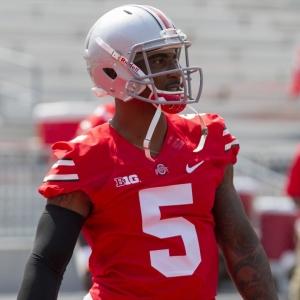College Football Handicapping: Differences in Betting Conference Play
by Trevor Whenham - 9/24/2013
![]()

We see conference games every weekend of the college football season, but in the first four weeks of the year they are relatively rare. By the last week of September, though, conference games become the norm. For bettors, making a successful shift from nonconference action to conference games requires some adjustments. Here are five differences between nonconference and conference play, and what they mean for bettors.
Familiarity
There are some nonconference matchups that happen every year. More often, though, teams that play each other don’t have a lot of history and don’t know a lot about each other. The old saying goes that familiarity breeds contempt, so it is much tougher to get fired up for all but the best unfamiliar opponents.
When teams play each other every year in college play — or every other year in a lot of cases — that means that there are fewer surprises. Players know each other and what they are capable of. They know the buildings and the facilities they are visiting. They know what to expect from the crowd. That all has positive and negative effects.
On one hand, it makes it easier for teams to prepare for an opponent because they know what is likely to come in most cases. On the other hand, though, it can be much tougher for a team to catch their opponent off guard — when you are familiar with an opponent you know how they think.
For handicappers in these situations, there is a general rule to remember — the more familiar two opponents are, and the more recently they have seen each other, then the more important their relative talent levels are. Familiarity makes different styles of play less likely to provide an edge, so the better players are more likely to come out on top. This is obviously far from a foolproof rule, but it is a good guideline to bet by.
Closer styles
All teams in a conference don’t necessarily play the same way, but there is a general tendency for teams in a conference to have similar styles.
The SEC, for example, has traditionally played a tight defensive style, though we have seen that shift lately. The Big Ten plays a power game that favors brute force over speed. The Big 12 favors offense over defense, and so on.
It can be very challenging to handicap a game when two very different styles clash because you can’t be sure which will have the edge. When the teams are more equally-matched, you can focus more on player matchups than style edges — and that is generally easier to do more effectively.
Fewer mismatches
One of the most frustrating aspects of nonconference play is all of the mismatches.
For the most part, major conference teams need only one or two legitimate wins over good teams to prove themselves before conference play begins. Beyond that, wins are more important than opponent quality, so teams have more incentive to schedule cupcakes than legitimate tests of their abilities.
Mismatches can and do happen in each major conference as well, but the gap between the best and worst teams is typically smaller than the gap between top teams and their helpless nonconference foes. Mismatches can be tough to handicap because of the massive spreads. Smaller spreads between more evenly-matched teams give the bigger edge to skilled handicappers.
Fans typically more engaged
For all but the best teams in the country, national aspirations aren’t realistic. What their fans can hope for, then, isn’t a National Championship or BCS bid, but a shot at a conference title. That means that games against a random conference opponent is going to be more exciting for fans than most nonconference opponents that aren’t rivals.
The more engaged fans are, the more significant the home-field advantage can be. In college football there can be a wide range in the significance of the home-field advantage, so being aware of the likely crowd engagement is important — especially in games that could be close.
More public interest
When nonconference play begins it is still the end of summer. Kids are getting ready to go back to school, people are enjoying the last of the best season of the year, and football isn’t always on the minds of casual bettors. By the end of September when conference season rolls into full force, though, the public is back into football mode. The NFL has people thinking football, and the extra action on Saturday is more compelling.
For solid handicappers, the more public action, the better — as long as you are aware of how the public is betting, how it affects how the lines are set and how they move, and where the value lies as a result of the public bets.
Read more articles by Trevor Whenham
Most Recent College Football Handicapping
- 2024 College Football National Championship Futures Odds with Expert Betting Predictions
- 2024-25 Heisman Trophy Predictions with Betting Odds
- College Football Playoff: Odds and Best Bets to Make 12-Team Field
- College Football Predictions: Week 10 Opening Line Report and Picks
- College Football Predictions: Week 9 Opening Line Report and Picks
- College Football Predictions: Week 8 Opening Line Report and Picks
- College Football Predictions: Week 7 Opening Line Report and Picks
- College Football Predictions: Week 6 Opening Line Report and Picks
- College Football Predictions: Week 5 Opening Line Report and Picks
- College Football Predictions: Week 4 Opening Line Report and Picks
